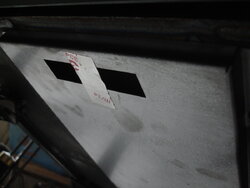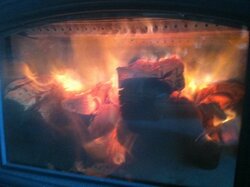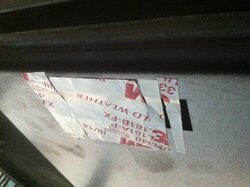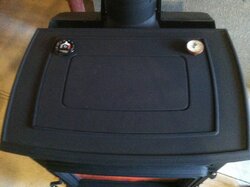DISCLAIMER:
I am not a wood stove engineer/designer. What I am about to do is technically termed "monkeying-around" with the stove's design. Do so with yours at your own risk.
OK, so here's the monkeying-around I did so far.

The unregulated secondary air slot is four inches wide. I cut a piece of stainless dryer duct tape one inch wide and placed it over the center of the slot. This seemed to provide increased control. I'm still running with the damper closed, but I can keep it from running away.
This morning I cut a two inch piece and placed it over the one inch piece (center half of the slot is covered). This provides even more control. I'm still running with the damper closed, but I can have the primary air slightly off the stop. Stove top is at 600 degrees.
I'm gonna try three inches this afternoon, but I'm a little concerned about the weather influence. It's supposed to go up to 45 with rain this afternoon (yuck).

Here's the one inch strip:
View attachment 149434







